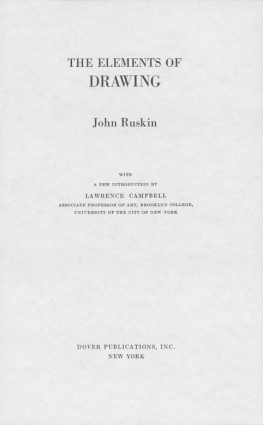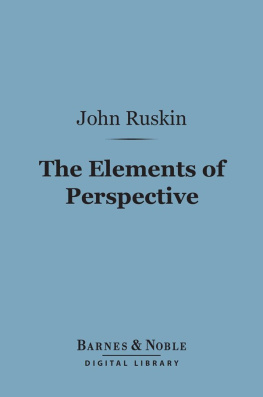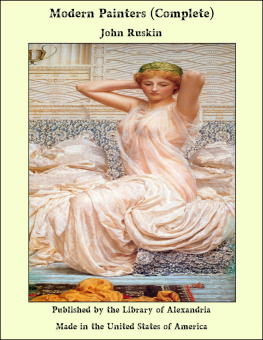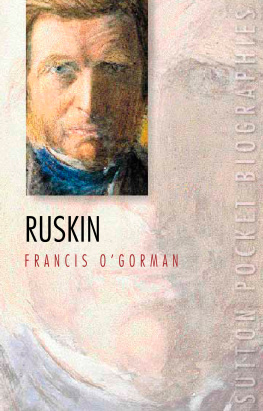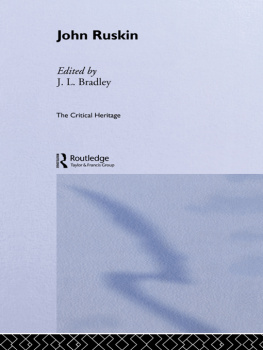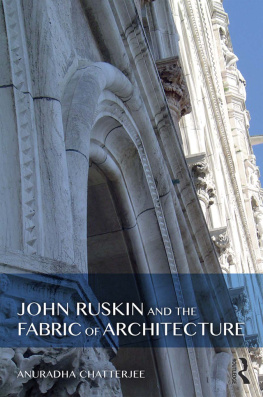John Ruskin - The Stones of Venice - III. The Fall
Here you can read online John Ruskin - The Stones of Venice - III. The Fall full text of the book (entire story) in english for free. Download pdf and epub, get meaning, cover and reviews about this ebook. publisher: Smith, Elder, genre: Science. Description of the work, (preface) as well as reviews are available. Best literature library LitArk.com created for fans of good reading and offers a wide selection of genres:
Romance novel
Science fiction
Adventure
Detective
Science
History
Home and family
Prose
Art
Politics
Computer
Non-fiction
Religion
Business
Children
Humor
Choose a favorite category and find really read worthwhile books. Enjoy immersion in the world of imagination, feel the emotions of the characters or learn something new for yourself, make an fascinating discovery.

- Book:The Stones of Venice - III. The Fall
- Author:
- Publisher:Smith, Elder
- Genre:
- Rating:5 / 5
- Favourites:Add to favourites
- Your mark:
- 100
- 1
- 2
- 3
- 4
- 5
The Stones of Venice - III. The Fall: summary, description and annotation
We offer to read an annotation, description, summary or preface (depends on what the author of the book "The Stones of Venice - III. The Fall" wrote himself). If you haven't found the necessary information about the book — write in the comments, we will try to find it.
The Stones of Venice - III. The Fall — read online for free the complete book (whole text) full work
Below is the text of the book, divided by pages. System saving the place of the last page read, allows you to conveniently read the book "The Stones of Venice - III. The Fall" online for free, without having to search again every time where you left off. Put a bookmark, and you can go to the page where you finished reading at any time.
Font size:
Interval:
Bookmark:
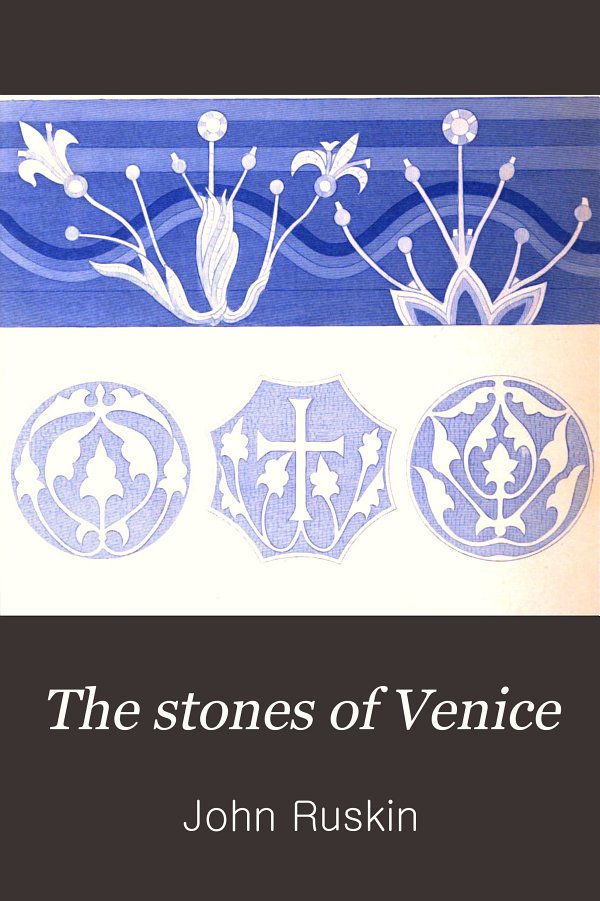
This is a digital copy of a book that was preserved for generations on library shelves before it was carefully scanned by Google as part of a project to make the world's books discoverable online. See the back of the book for detailed information.
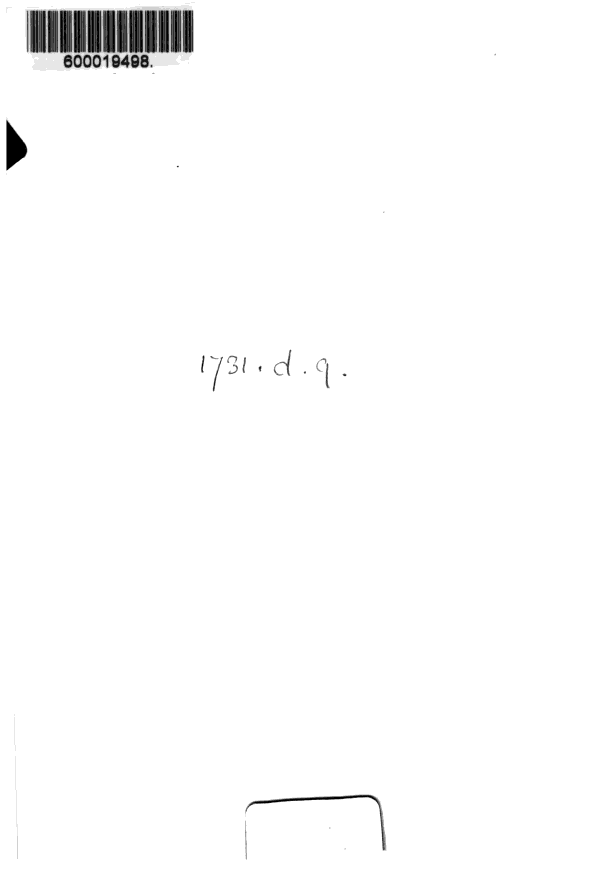
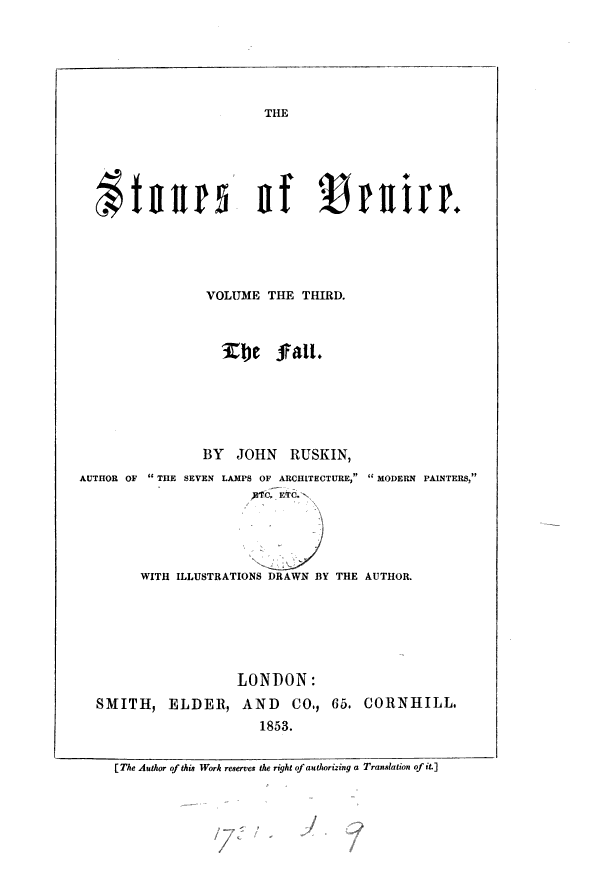


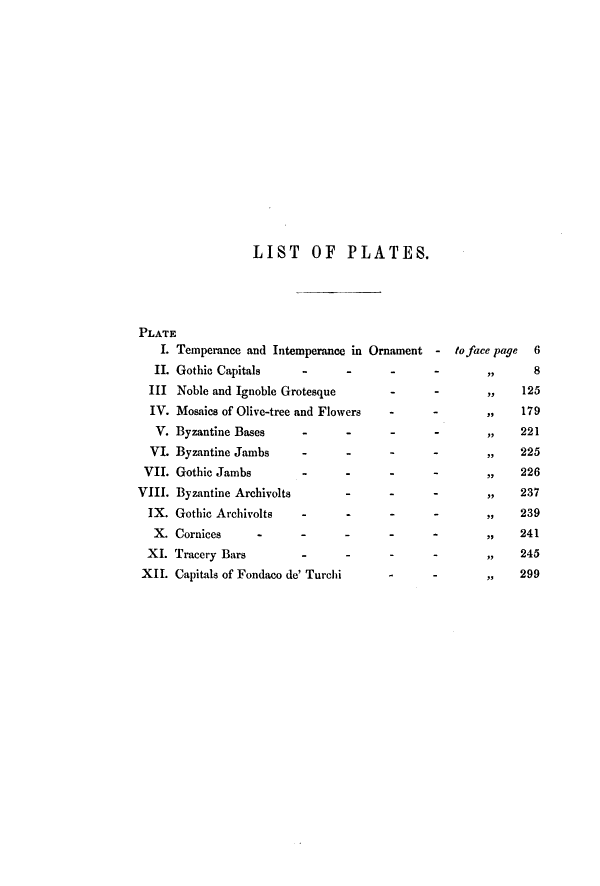

THIRD, OR RENAISSANCE, PKRTOD.
CHAPTER T.
EARLY RENAISSANCE.
I. I Trust that the reader has been enabled, by the preceding chapters, to form some conception of the magnificence of the streets of Venice during the course of the thirteenth and fourteenth centuries. Yet by all this magnificence she was not supremely distinguished above the other cities of the middle ages. Her early edifices have been preserved to our times by the circuit of her waves; while continual recurrences of ruin have defaced the glory of her sister cities. But such fragments as are still left in their lonely squares, and in the corners of their streets, so far from being inferior to the buildings of Venice, are even more rich, more finished, more admirable in invention, more exuberant in beauty. And although, in the North of Europe, civilization was less advanced, and the knowledge of the arts was more confined to the ecclesiastical orders, so that, for domestic architecture, the period of perfection must be
VOL. III. B
there placed much later than in Italy, and considered as extending to the middle of the fifteenth century; yet, as each city reached a certain point in civilization, its streets became decorated with the same magnificence, varied only in style according to the materials at hand, and temper of the people. And I am not aware of any town of wealth and importance in the middle ages, in which some proof does not exist, that, at its period of greatest energy and prosperity, its streets were inwrought with rich sculpture, and even (though in this, as before noticed, Venice always stood supreme) glowing with colour and with gold. Now, therefore, let the reader, forming for himself as vivid and real a conception as he is able, either of a group of Venetian palaces in the fourteenth century, or, if he likes better, of one of the more fantastic but even richer street scenes of Rouen, Antwerp, Cologne, or Nuremberg, and keeping this gorgeous image before him,go out into any thoroughfare, representative, in a general and characteristic way, of the feeling for domestic architecture in modern times; let him, for instance, if in London, walk once up and down Harley Street, or Baker Street, or Gower Street; and then, looking upon this picture and on this, set himself to consider (for this is to be the subject of our following and final inquiry) what have been the causes which have induced so vast a change in the European mind.
H. Renaissance architecture is the school which has conducted men's inventive and constructive faculties from the Grand Canal to Gower Street; from the marble shaft, and the lancet arch, and the wreathed leafage, and the glowing and melting harmony of gold and azure, to the square cavity in the brick wall. We have now to consider the causes and the steps of this change; and, as we endeavoured above to investigate the nature of Gothic, here to investigate also the nature of Renaissance.
in. Although Renaissance architecture assumes very different forms among different nations, it may be conveniently referred to three heads : Early Renaissance, consisting of the first corruptions introduced into the Gothic schools: Central or Roman Renaissance, which is the perfectly formed style: and Grotesque Renaissance, which is the corruption of the Renaissance itself.
IV. Now, in order to do full justice to the adverse cause, we will consider the abstract nature of the school with reference only to its best or central examples. The forms of building which must be classed generally under the term early Renaissance are, in many cases, only the extravagances and corruptions of the languid Gothic, for whose errors the classical principle is in no wise answerable. It was stated in the second chapter of the "Seven Lamps," that, unless luxury had enervated and subtlety falsified the Gothic forms, Roman traditions could not have prevailed against them; and, although these enervated and false conditions are almost instantly coloured by the classical influence, it would be utterly unfair to lay to the charge of that influence the first debasement of the earlier schools, which had lost the strength of their system before they could be struck by the plague.
V. The manner, however, of the debasement of all schools of art, so far as it is natural, is in all ages the same; luxuriance of ornament, refinement of execution, and idle subtleties of fancy, taking the place of true thought and firm handling: and I do not intend to delay the reader long by the Gothic sick-bed, for our task is not so much to watch the wasting of fever in the features of the expiring king, as to trace the character of that Hazael who dipped the cloth in water, and laid it upon his face. Nevertheless, it is necessary to the completeness of our view of the architecture of Venice, as well as to our understanding of the manner in which the Central Renaissance obtained its universal dominion, that we glance briefly at the principal forms into which Venetian Gothic first declined. They are two in number: one the corruption of the Gothic itself; the other a partial return to Byzantine forms: for the Venetian mind having carried the Gothic to a point at which it was dissatisfied, tried to retrace its steps, fell back first upon Byzantine types, and through them passed to the first Roman. But in thus retracing its steps, it does not recover its own lost energy. It revisits the places through which it had passed in the morning light, but it is now with wearied limbs, and under the gloomy shadows of evening.
vi. It has just been said that the two principal causes of natural decline in any school, are over-luxuriance and over-refinement. The corrupt Gothic of Venice furnishes us with a curious instance of the one, and the corrupt Byzantine of the other. We shall examine them in succession.
Now, observe, first, I do not mean by luxuriance of ornament, quantity of ornament. In the best Gothic in the world there is hardly an inch of stone left unsculptured. But I mean that character of extravagance in the ornament itself which shows that it was addressed to jaded faculties; a violence and coarseness in curvature, a depth of shadow, a lusciousness in arrangement of line, evidently arising out of an incapability of feeling the true beauty of chaste form and restrained power. I do not know any character of design which may be more easily recognized at a glance than this over-lusciousness; and yet it seems to me that at the present day there is nothing so little understood as the essential difference between chasteness and extravagance, whether in colour, shade, or lines. We speak loosely and inaccurately of "overcharged" ornament, with an obscure feeling that there is indeed something in visible Form which is correspondent to Intemperance in moral habits; but without any distinct detection of the character which offends us, far less with any understanding of the most important lesson which there can be no doubt was intended to be conveyed by the universality of this ornamental law.
Font size:
Interval:
Bookmark:
Similar books «The Stones of Venice - III. The Fall»
Look at similar books to The Stones of Venice - III. The Fall. We have selected literature similar in name and meaning in the hope of providing readers with more options to find new, interesting, not yet read works.
Discussion, reviews of the book The Stones of Venice - III. The Fall and just readers' own opinions. Leave your comments, write what you think about the work, its meaning or the main characters. Specify what exactly you liked and what you didn't like, and why you think so.

